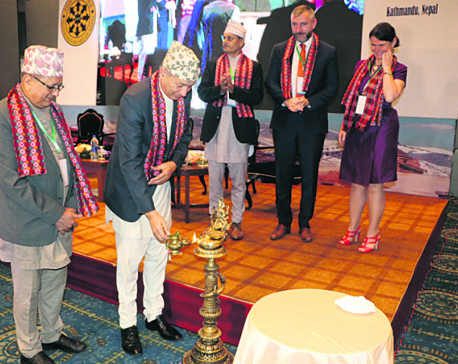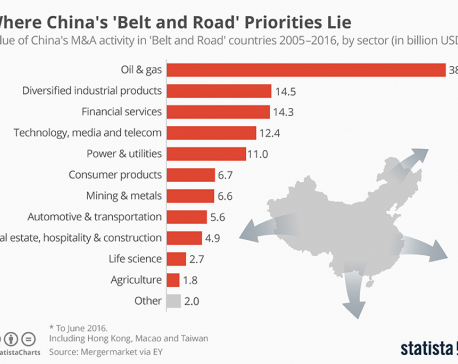
OR
Education, education, education
The government’s top priority should be improving the state of Nepal’s public education system because it is deteriorating, rather than improving, every year. There is a great urgency to reform the entire system to ensure that the children who attend public schools become as competent in learning and as fit for the much competitive job market.
We need to start the reforms right away. The available data shows that 80 percent of children—most of them from poor economic background from Nepal’s hinterlands in hills and Madhes—study in around 23,000 public schools. But the dropout rate in public schools is so huge that out of around one and half million students who enroll in grade one, only 450,000 students study up to grade ten to sit for Secondary Education Examination (SEE). This is one indicator of how our public education system is failing but there are other disturbing reports too.
In Rolpa district, for example, out of 681 students who appeared for their eeighth-gradeexam, only 42 passed the exam. Alarmingly, of 21 schools in Triveni Rural Municipality of the district, none of the students passed from 10 schools, six secondary schools and four basic schools.
Even the students from some of the best schools performed poorly in the exams. This shows where our public schools stand. We know what ails our public education: Students do not get text books on time, classes are not regular, teachers are not trained and devoted enough to impart best learning, we have poor infrastructures in public schools and so on. The situation of public schools in earthquake affected districts is even more troubling for only 3,500 schools, out of 7,553 that were destroyed by earthquakes, have been rebuilt so far, which means that the vast majority of students in these schools are still forced to attend classes under makeshift structures or open sky.
Prime Minister Oli has upped the ante for ensuring what he calls cent percent education attainment. A fortnight ago, he launched student enrolment campaign by enrolling Thinle Sangmu Lama in a school in Mugum Karmarong Rural Municipality of Mugu district. He also took up guardianship of six-year-old Lama by providing her with school uniform, textbooks and school bag. This is a noble move in itself but it is not enough.
His government should ensure that not a single child is left behind and that every child who is enrolled in public school gets to complete his high school and comes out qualified to pursue university education. The constitution has granted powers to frame curriculum and ensure quality education to local levels.
The local government actors need to be directed to take up their educational role with the seriousness it deserves. In 1997, British Prime Minister laid out three top priorities of his government by saying that they are “education, education and education.” PM Oli should display similar commitment with special focus on public schools. It would be a mistake to leave Nepal’s public schools where millions of poor go to ensure their better future in a mess. It would also be unconstitutional not to safeguard the right to education granted by the constitution itself.
You May Like This

10 priorities identified for financial consumer protection, education
KATHMANDU, July 8: Financial and securities market experts and high-level officials from Asia Pacific region who were in Kathmandu last week... Read More...

Misplaced priorities
Ministers in inaugurations ... Read More...

Infographic: Where China's 'Belt and Road' priorities lie
In October 2013, Chinese President Xi Jinping first proposed the ‘One Belt One Road’ initiative during his visit to Central... Read More...





Just In
- Kushal Dixit selected for London Marathon
- Nepal faces Hong Kong today for ACC Emerging Teams Asia Cup
- 286 new industries registered in Nepal in first nine months of current FY, attracting Rs 165 billion investment
- UML's National Convention Representatives Council meeting today
- Gandaki Province CM assigns ministerial portfolios to Hari Bahadur Chuman and Deepak Manange
- 352 climbers obtain permits to ascend Mount Everest this season
- 16 candidates shortlisted for CEO position at Nepal Tourism Board
- WB to take financial management lead for proposed Upper Arun Project






_20220508065243.jpg)







Leave A Comment